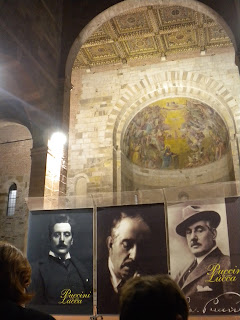The recent exhibitions at The Queen’s Gallery including the
astronomically popular Leonardo exhibition last summer have demonstrated that
this gallery is capable of some stimulating exhibitions packed full of the most
interesting works of art from the Royal Collection.
This recent offering focuses on the costumes of the Tudor
and Stuart monarchy and their court. It combines paintings with examples of the
original clothes which brings the paintings to life and demonstrates
the high standards and intricacy that was expected from artisans and artist
alike.
The exhibition shows that just like in the fashion world today the most
famous men and women wanted to be at the cutting edge taking
inspiration from their contemporaries at home and on the continent. We can see the array of materials, jewels and
styles that the royals and the aristocracy used to assert their taste and
status. All carefully observed and painted by the court artists favoured at the
time such as Sir Peter Lely, Hans Holbein and Sir Antony Van Dyck.
One of the most interesting works has to be the portrait of
Charles I by Van Dyck. The king is painted from three angles because the
painting was to be sent abroad to a sculptor who would have required a likeness
to work from.
To the right of the painting is a delicate original lace collar
similar to the one worn by Charles. It is nice to be able to compare the way
that the artist has painted the collar with how it would have originally looked
as it forces us to see the degree of fidelity to the original that the artist
was practicing. Of course the collar in the display case is not the exact one in the painting, in fact the King wears three different outfits in the painting probably intending to give the sculptor plenty of choice as well as showing off the breadth of his wardrobe.
To a modern viewer being shown in three different outfits in one painting does not seem so impressive but the costs of fine clothes in that era where far and away beyond our modern day prices. This is particularly clear when we look at some of the representations of the Tudor and Stuart women in their elaborate get ups. Such as the frankly ostentatious apparel of Lady Anne of Denmark (the cover girl for this exhibition). It is clear that no expense has been spared on this dress and that every intricate detail has been pointed out to the painter who in turn points it out to the viewer.
There is also a very clever little exhibition publication
entitled Robe magazine which is a mock-up of a fashion magazine from 1667 including quirky features on some of the works in the exhibition. At £3.95 it is a
fun accompaniment to the exhibition.
So enjoy but don't forget to book!










